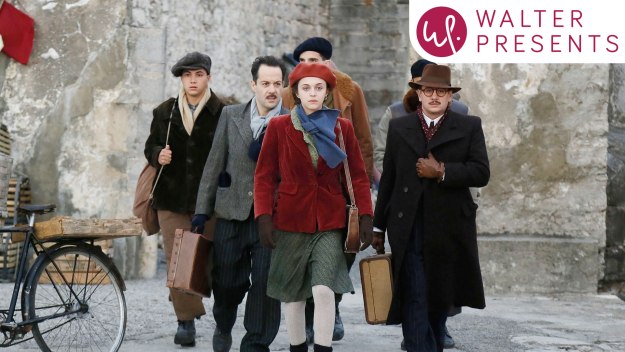Walter Iuzzolino’s series on Channel 4 ÔÇô Walter Presents ÔÇô selects the most popular, critically acclaimed television dramas from around the world, allowing anyone with a laptop and Wi-Fi in Britain to falsely feel like they are cultured through watching handpicked shows (such as Spain’s Locked Up to Belgian black-comedy thriller The Out-Laws) for free on Channel 4’s streaming service All 4.
Each week Sinead McCausland will┬ábe reviewing a new show that the titular Walter has selected, hopefully encouraging more fans of world drama TV shows that aren’t American. Here are her thoughts on Resistance.

Taking place during the Second World War, Resistance is a six episode series based on true events. Following a group of young students, the French mini-series is set in Paris during 1940, basing the events of the group we follow on the activities of the French resistance Group du mus├®e de l’Homme ÔÇô a resistance group who used the guise of a literary society to hide their meetings from Germans.
Unlike the acclaimed Un Village Fran├ºais, ÔÇô in which morals, heroes and villains are blurred in Nazi-occupied France ÔÇô Resistance provides the typical clich├®s attributed to Second World War dramas. From heroes vs. villains to physical, violent resistance against more mindful, philosophic resistance, the mini-series creates tensions between cities within France and characters split by choice of action.
The main character Resistance‘s creator Dan Franck wants us to follow is Lili, who takes charge of distributing the eponymous newspapers around Paris. While witnessing Lili trying to live up to Gaulle’s ÔÇô the minister of an exiled government in support of French resistance ÔÇô we also see her fall in love with a fellow Resistance member; learn how to use grenades, guns and knives in self-defense and as a show of resistance; and get captured ÔÇô and then escape captivity from ÔÇô the Gestapo.
Resistance depicts an unsurprisingly depressing world, with hope in the final episode being left off-screen in the hands of Americans ÔÇô all hope in this mini-series is blind hope. However, joy is to be found in the microelements: Thierry Westermeyer’s music creates the sense of urgency Lili and co must feel as they try and act as heroes to defend their country, with the piano keys of the music keeping a delicate, almost fragile, atmosphere within the background of Resistance, as if the score itself attempts to defy the Nazis. Dominique Bouilleret and St├®phane Le Parc’s cinematography work perfectly with C├®line Brelaud and Nicolas Tubert’s costume design, as each character’s emotions come to be defined by how they look, how they are framed, and what they wear, since these things cannot be spoken given their context and frame-of-mind. As the mini-series comes to episode four, notice how Lili’s costumes change from being the bright red, almost na├»vely attention-drawing outfits to more subdued tones, often blending in with the background and the protagonist’s surroundings ÔÇô this shows many things, but mostly how much she has learnt, as well as how much she has lost.
For The Guardian, Euan Ferguson describes how in Resistance, the ÔÇÿmost precious ÔÇô the only ÔÇô currency [is] trust’ ÔÇô and it is. This is the currency that provides Lili with the will to go on after members of her group are tortured: the trust there are other people with the resistance; the trust in her country; and the trust she feels for herself.
Resistance is a part of the series Walter Presents for Channel 4. For more information on Walter Presents, click here. The first series of Resistance is available to watch here.
Sinead McCausland



